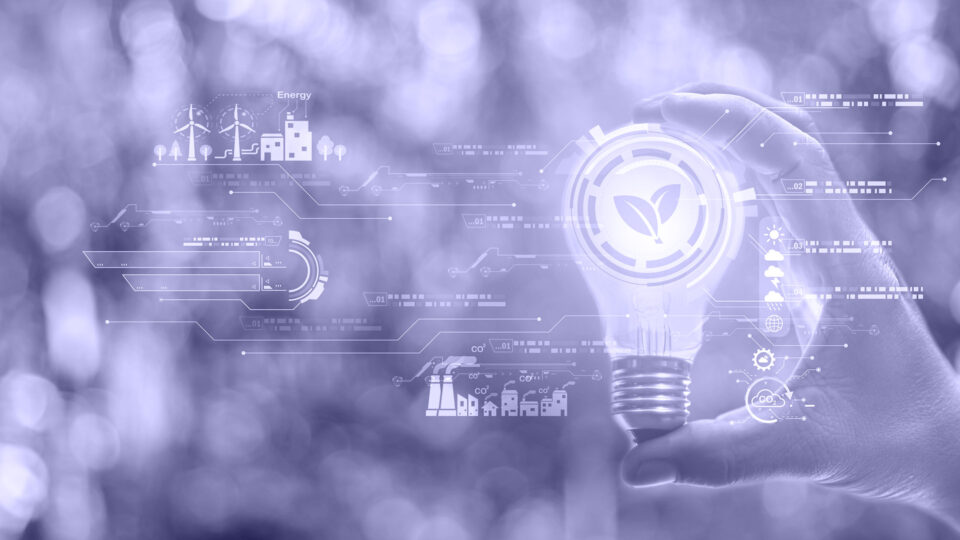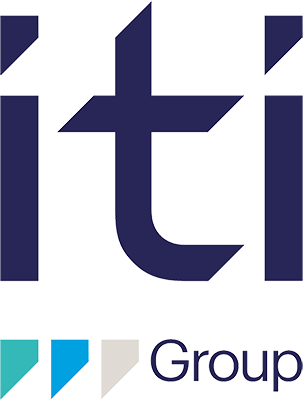Empowering the Energy Revolution: the role of Digital Twins in the Industry

In the rapidly evolving landscape of the energy industry, digital transformation has emerged as a pivotal force to address macro challenges such as security of supply, grid flexibility, and market reforms. Industry leaders, including National Grid, EDF, and SSE, recognise that achieving ambitious goals, such as ’50GW by 30’* requires a paradigm shift in approach. The key to success lies in a holistic digital transformation, and at the forefront of this revolution is the concept of digital twins.
The Imperative for Digital Transformation in Energy
The ’50GW by 30′ initiative, aiming to increase offshore generation from just over 13GW to 50GW by 2030, necessitates a fourfold increase in offshore wind delivery. This ambitious goal demands a comprehensive approach to grid evolution and network design, effectively managing intermittent generation from both offshore and onshore wind. The shift from a ‘supply-led’ to a ‘demand-led’ energy system requires seamless integration of generation, transmission, distribution, and distributed resources.
This ambitious energy revolution can only be achieved through effective digital transformation and importantly, availability of data and information across a diverse value chain. For this reason, National Grid ESO (nationalgrideso.com) have launched the Virtual Energy System (VES), which seeks to catalyse data sharing across the energy market, harnessing the power of digital twins. The VES will be built around an open framework providing consistency in key areas such as cyber security and governance, and creating a culture of collaboration, expanding on the concept of connected digital twins, emphasising the importance of data and information availability throughout the value chain.
Digital Twins in Industry: A Revolution Unfolding
The concept of digital twins isn’t new, particularly in industries like manufacturing, where product lifecycle management approaches have been in use for some time. The introduction of digital twins as a key industry ambition in 2017 marked a turning point, with the National Infrastructure Commission highlighting their potential economic benefits. The energy sector has begun to embrace this transformative technology, with organisations like Sellafield leading the way in optimising operations with digital twin solutions.
While digital twins have seen slower adoption in the energy sector compared to manufacturing, the parallels between the two are striking. Just as in manufacturing, digital twins in energy enhance operational efficiency, predict maintenance needs, and optimise production processes. National Grid’s digital strategy sets out a vision for using digital twins to scenario-plan different demand and supply models, improving planned interventions and decision-making in asset management.
ITI Group’s work on diverse simulation/digital twin projects demonstrates the versatility of these technologies across industry sectors. From validating manufacturing processes for Cadbury’s new Chewing Gum factory to managing CO2 emissions with the Sellafield Carbon Footprint Modelling Tool, digital twins prove their worth in infrastructure management, environmental sustainability, and public health.
The Trajectory of Digital Twins: A Shift towards Intelligent Operational Models
The trajectory of digital twins across industries signifies a shift towards more integrated, intelligent, and predictive operational models. Whether in energy, manufacturing, or any other sector, the ability to simulate and analyse complex systems in virtual environments is transforming how organisations approach problem-solving and decision-making.
In conclusion, the energy industry stands on the cusp of a transformative era, propelled by the power of digital twins. As organisations embrace this technology, they pave the way for a more resilient, sustainable, and demand-driven energy landscape. The integration of digital twins in the energy revolution is not just a technological advancement; it’s a commitment to shaping a future where data-driven insights steer the course of progress.
* a policy ambition to increase offshore generation from just over 13GW today to 50GW by 2030, requiring a fourfold increase in offshore wind delivery. Source: Offshore wind – great.gov.uk international.
